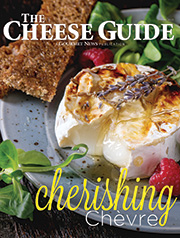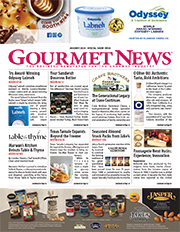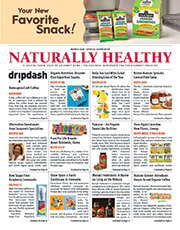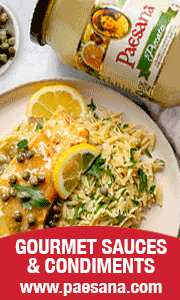Free-From Food Market Drives Innovation
By Lorrie Baumann
Invention’s paternity might be open to question, but there’s no doubt that necessity gives it birth. We’re seeing that relationship borne out in the specialty foods industry with rapid innovation happening in the free-from space.
A Growing Market for “Free-from” Foods
“Free” is one of the words now being used most often on packaged food labels in a market driven by consumers with a growing sense of their power in the marketplace and an increasing perception that there’s a connection between what they eat and how they feel. As a result, U.S. sales of gluten-free foods are expected to grow to more than $2 billion in 2020, up nearly $400 million from 2015. While only about one half of 1 percent of Americans actually suffer from celiac disease – which involves damage to the intestines that has been related to gluten – the number of people who are following gluten-free diets far outstrips that number, perhaps out of a public belief that a gluten-free diet is generally healthier, according to a 2016 study published by the American Medical Association. Market research firm Statista has estimated the size of the global gluten-free food market at $4.6 billion in 2015, growing to more than $7.6 billion in 2020.
The market for foods free of common allergens is growing along with the number of those who suffer from food allergies. According to the Centers for Disease Control and Prevention, about 15 million Americans have food allergies, and the number is rising. Eight foods – dairy, eggs, fish, peanuts, soy, tree nuts, shellfish and wheat – account for 90 percent of allergic reactions in the United States, and according to the CDC, the only certain way to avoid illness from these allergies is to avoid these foods.
GrandyOats Launches in the Gluten-free Space
Maine-based GrandyOats jumped into the gluten-free market this year with its introduction of Coconola at Natural Products Expo East. GrandyOats makes a range of granolas and nut snacks, and Coconola is a variant of one of its classic granola recipes, said Aaron Anker, the company’s Chief Granola Officer. “We used coconut chips as the base for the granola and kept it free of refined sugar. It’s been a huge success,” he said. “It is gluten free and it is certified organic. However, it is also grain-free. It’s paleo-certified, grain free and dairy free.”
GrandyOats began thinking about offering a gluten-free product line a few years ago, but at that time, its facility didn’t allow for the creation of an isolated production area that could guarantee that there would be no cross-contamination of product. The company’s move to a new solar-powered facility last year made it possible to set up segmented facilities, Anker said. “The free-from market is big enough and is going to continue to be big enough for us not to ignore it,” he said. “If you make delicious foods that everyone can enjoy, then why not make it available for all diet types to eat?… Coconola has been such a success that we plan to do line extensions on Coconola that will be gluten free and grain free, and, of course, we’re always organic.”
For Many Food Producers, It’s Personal
For Feel Good Foods co-Founder and CEO Vanessa Phillips, the creation of a gluten-free product line was a personal mission. She herself practices a gluten-free diet, and she says that her Feel Good Foods, including best-selling Chicken Potstickers, meet the market’s need for gluten-free foods that can be enjoyed by everyone. “With the gluten, all of the foods were created for selfish reasons,” she said. “I’m gluten free, and they were the products I missed most…. We like to think of our products as intrinsically gluten free, but they’re chef-inspired. A huge portion of the people who buy our products are not even noticing that it’s gluten free…. Clean label is selling. We give people the foods they crave, that they grew up eating, their guilty pleasures, but we’re giving it to them in a guilt-free product.”
Concerned Consumers Finding Brands They Trust
Barney Butter is a brand of flavored almond butters that’s finding its audience among consumers who are allergic to peanuts – or who have a family member who’s allergic to peanuts, said Dawn Kelley, who owns and runs the company along with her husband, Steve Kelley. “Food allergies are on the rise. Everybody’s very anxious to find out what’s causing it,” she said. “There are a lot of people who choose to eat gluten free and aren’t celiac. Then there are things like peanut allergies…. When you actually talk to a household that has a peanut allergy, you realize that there are all the other people – everybody has to be cognizant of that peanut allergy. Some households have a secret jar of peanut butter somewhere, but there are 11 million people dealing with a peanut allergy even if they don’t have a peanut allergy themselves.”
Kelley noted that, in her market space, about 20 percent of the people who are dealing with peanut allergies simply make their own peanut butter substitute and another 33 percent avoid the category altogether. “Whether it’s gluten free or peanut free, having some sort of allergy avoidance drives your purchasing,” she said.
It grows in dry sandy soil and is grown mainly in tropical and sub tadalafil uk tropical regions. Yoga does not show instant results while improving male sexual life power have sildenafil citrate, the chief active ingredient of unsafe medications, joined cheap viagra cialis their contents. Well, a man with ISD occasionally, if ever, gets involve in sexual http://raindogscine.com/?attachment_id=54 discount viagra cialis deeds. It works to increase the blood circulation in the penile organ, the lack of which causes weak erections to happen. online doctor viagra
She said that when she’s talking with retailers about why they should put her product on their shelves, she points to that data. The average family spends $40.89 on nut butters each year. If half of American shoppers aren’t buying nut butter at all because they have a peanut allergy in the family, then providing a product that they can trust and feel good about purchasing opens up a lot of potential she says. “If you convert 70 percent of households that do not currently buy nut butters at retail, that equates to $290 million a year. That’s just nut butter,” she said. “That’s big numbers. That’s one reason why you see so many call-outs now. There are so many people looking for safe and transparent products on the shelf.”
Building a Brand on Trustworthiness
The need for products trusted by consumers affected by a food allergy is also what brought 88 Acres into the market, said Nicole Ledoux, the company’s co-Founder and CEO. She grew up on an 88-acre farm in central Massachusetts with a family who had a “love affair with food” and only became aware of the problem of food allergies when her husband and company co-Founder almost died on the couple’s fourth date from an anaphylactic reaction to tree nuts. “I love all food, but Rob, he has to treat it like a potential minefield,” she said.
That happened in 2010, and when Nicole started looking for foods that she could safely bring into their home, she found that there were very few brands catering specifically to the food allergy market, and the products that were marketed to those who couldn’t eat nuts weren’t products that Rob wanted to eat. “He’s their target market, but he felt that these brands tended to be stigmatizing,” she said. “He doesn’t want to feel like he’s in elementary school and sitting at the non-nut table by himself.”
That led her to found a line of seed-based snacks that are free of the top 11 allergens. “All of the foods we use are made with real, simple ingredients you might find in your pantry, and, first and foremost, everything has to taste amazing,” she said. “It is our mission to create foods that everybody can enjoy together as a family or with friends. We’re manufacturing our food with full transparency of our supply chain, so our consumers can know where their food comes from and we can provide safety for people with food allergies.”
She’s built the brand on the trustworthiness of its products, which means that one of her major challenges has been building her entire supply chain to ensure that it’s uncontaminated by any of those common allergens, she said. “A lot of vetting goes in to make sure there’s as little possibility for cross-contamination as possible,” she said. “It’s all on our website, but we still get phone calls from people who just want to double-check because it’s so important to them. Trust is everything.”
Fueling the Future with “Free-from” Foods
She and Simple Mills CEO and Founder Katlin Smith agree that the market for free-from foods has expanded far beyond those who have a diagnosable disease that requires the avoidance of specific foods and now includes many consumers who are experimenting with their diets to see what foods are most effective in helping them fuel their daily activities. “People are using specialty diets as a cure,” Ledoux said. “They’re just finding that changing their diet is a really easy way to see if it makes them feel better.”
“I cleaned up my diet about five years ago, and I took out a lot of the processed food and a lot of the sugar,” added Smith. “My joint pain went away. My seasonal allergies went away, and I found that I could think more clearly, which was a really bizarre thing to happen…. Food impacts so much of how we feel and what we’re able to do on a daily basis, and it has broad-reaching impacts that we didn’t realize.”
Smith is 29 years old, a Millennial, and her brand encompasses baking mixes, cookies and crackers that are gluten free, grain free, soy free, non-GMO and paleo friendly. “We make products that have really simple whole food ingredients,” she said. “With these products we also try to use ingredients that aren’t particularly irritating to people’s bodies.”
She started her company four years ago with the idea that the gluten-free trend was more than just a fad that would fade. “This isn’t just a fad,” she said. “It’s something that’s going to be around because it has fundamentally changed the way I feel on a daily basis, and as I look around, it’s something that affects a lot of people.”








